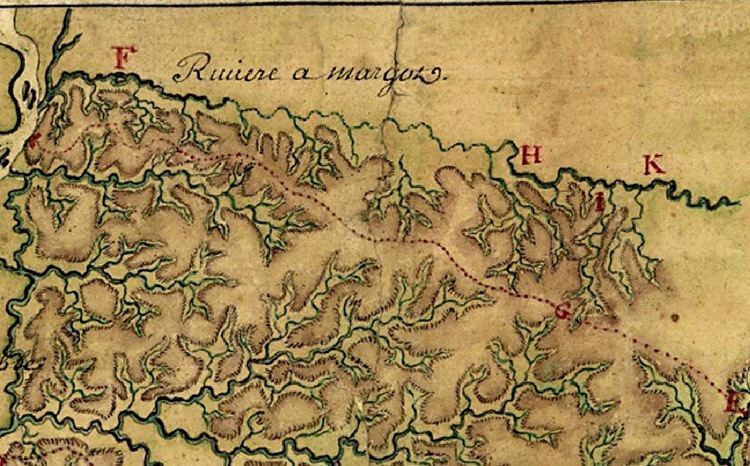Headquartered in Memphis, Tennessee, the Wolf River Conservancy (WRC) is a non-profit 501(c)(3) organization whose stated purpose is "conserving and enhancing the Wolf River and its environs as a natural resource for public education and low-impact recreational activities." It has approximately 1,500 members from throughout West Tennessee, led by an active Board of Directors and staff and advised by the Wolf River Conservancy Trustees. It is a fully accredited member of The Land Trust Alliance.
The WRC’s long-term goal is to promote the establishment of a greenway along the Wolf River by:
Educating Mid-Southerners of all ages about the river’s biodiversityAddressing policy issues that impact the riverIdentifying critical areas for acquisition by public agenciesThe WRC was formed in 1985 by a small group of people concerned about a new dredging and infill project on the Wolf River in Memphis. They had witnessed the effects of similar development-related degradation along nearby Nonconnah Creek. That small group has grown to include more than members from every community along the river. For ten years the group’s emphasis was in advocacy and education—commenting on wetland destruction or encouraging activities on the river during Wolf River Days. Only later did the group become a land trust organization by holding land or conservation easements in its own name.
The change occurred when WRC, the Tennessee Department of Environment and Conservation, the Tennessee Wildlife Resources Agency, and local conservationists W.S. “Babe” Howard and Lucius Burch merged their collective resources to satisfy the public’s outcry for the protection of the Ghost River section of the Wolf near LaGrange, Tennessee. During 1995, 4,500 acres (18 km²) -- including the Ghost River—were saved from a land and timber company auction. This area was ultimately brought into public ownership as the Wolf River Wildlife Management Area and the Ghost River State Natural Area.
With a dramatic increase in concern for the Wolf River by an increasingly more environmentally sensitive public, the Wolf River Conservancy continues to advance in new arenas, like the City of Memphis' Wolf River Greenway Master Plan, the Army Corps of Engineers/Shelby County Wolf River Restoration project in Collierville, recreational facilities at the river's source in the Holly Springs National Forest, as well as continued efforts to conserve and enhance the river's bottomland forests in Fayette and Benton counties.
10,000 BCE Wolf River formed by runoff from melting glacier shelf.800-1500 CE Mississippian culture rises and declines in this area, evidenced by mound sites and accounts by Hernando de Soto.1300-1700 CE Chickasaw nation settles northern Mississippi, western Tennessee, and eastern Arkansas.1682 French explorer Robert Cavelier de La Salle claims the region near the mouth of the Wolf River. The French alternately called the river Riviere de Mayot (or Margot), Blackbird River, and Riviere de Loup.The original Loup was rumored to be a Delaware Indian guide who disappeared along the river while guiding the French. The Delawares were also known as
Les Loups or "The Wolves." According to one account, both the English and Chickasaw afterwards called the river "Loup" in their respective languages: "Wolf" and "Nashoba."
1740 Non-local Native American scouts working for the French at Fort Assumption (Memphis) survey the Wolf as a possible military supply route from which to destroy Ackia, a Chickasaw stronghold near Tupelo that weathered an attack four years earlier. The group turned back near present-day Germantown, Tennessee, a town that briefly adopted the name "Neshoba" out of anti-German sentiment during the United States' involvement in World War I.Early 19th century The Wolf River is declared navigable, from Memphis to LaGrange, by the Tennessee General Assembly, which appropriated funds to remove obstructions for keel boat travel.1825 British-born Frances Wright establishes the Nashoba Commune on the Wolf River at the present-day site of Germantown, Tennessee. The commune's purpose was to educate and emancipate slaves using proceeds from the sale of crops grown there.1888 Memphis stops using Wolf River as its principal source of drinking water, switching to artesian wells, which are still used and which are recharged by the Wolf's watershed.1960 Because of its foul odor the Wolf is dammed near its mouth and diverted into the Mississippi north of Mud Island. The section of the Wolf downstream of this channel diversion became a slackwater harbor of the Mississippi known today as Wolf River Harbor, which separates Mud Island from the Memphis "mainland".Mid-1960s Completion of channelization of the Wolf from the Mississippi upstream to Gray's Creek, east of Germantown, Tennessee resulting in a lowered riverbed and diminished wetland habitat.1970 Surface drainage, sewage, and industrial pollution caused a group of scientists and environmentalists to pronounce the river "dead" around Memphis.1977 Mary Winslow Chapman publishes I Remember Raleigh, which including vivid descriptions of a pre-channelized Wolf River (early-to-middle 20th century).1985 Wolf River Conservancy founded by an alliance of conservation-minded real estate executives and local environmental advocates.1995 "Ghost River" section of the Wolf saved from timber auction by a coordinated effort of the Tennessee Wildlife Resources Agency, the Tennessee Department of Environment and Conservation, local conservation activists Lucius Burch and W.S. "Babe" Howard, and the WRC.1997 American Singer-Songwriter Jeff Buckley drowns during an evening swim in Wolf River Harbor.1998 First recorded full descent of the Wolf River completed by members of the Wolf River Conservancy.2004 City of Memphis' Wolf River Greenway, 22 mile (35 km) trail, master plan completed and then shelved (pending approval)2005 Commencement of the Wolf River Restoration Project by the U.S. Army Corps of Engineers, Memphis Office to stop rapid erosion known as "headcutting" at Collierville, Tennessee.2006 Loop trail completed by the U.S. Forest Service in the Holly Springs National Forest (Mississippi) near Baker's Pond, the source of the Wolf River.2007 "Middle Wolf" Campaign - attempted sprawl-proofing of the western Fayette County section.2007-2012 Completion of the Collierville-Arlington Parkway segment of Tenn-385 and I-269 outer loop expressway, including two (and potentially five) interchanges poised to become major drivers of suburban growth into forested sections of the Wolf River's floodplain and the surface-exposed sections of the Memphis Sands aquifer.
